A wilderness guide is an expert who leads groups in remote areas, ensuring safety and teaching survival skills. They navigate using maps, compasses, and natural signs, build shelters, and manage emergencies. Their knowledge of terrain and weather is crucial for a safe experience, promoting environmental ethics and respecting indigenous cultures. This role requires stamina, quick thinking, and leadership to handle harsh conditions and unexpected situations, ensuring safe returns.
What is a Wilderness Guide?
A wilderness guide is a trained professional who leads individuals or groups in remote, natural environments. They possess extensive knowledge of survival skills, navigation, and environmental awareness. Guides ensure safety, educate participants about the ecosystem, and facilitate immersive outdoor experiences. Their role often involves managing logistics, assessing risks, and making informed decisions in dynamic situations. Wilderness guides may specialize in activities like hiking, camping, or wildlife exploration, requiring physical stamina, strong leadership, and the ability to adapt to unpredictable conditions while fostering a deep connection with nature.
Importance of Wilderness Guides
Wilderness guides play a crucial role in ensuring safe and enriching outdoor experiences. They provide expertise in navigation, risk management, and emergency response, minimizing hazards in remote areas. Guides also share knowledge about ecosystems, fostering environmental awareness and appreciation. Their leadership enhances group dynamics and decision-making, while their First Aid and survival skills are vital in critical situations. By promoting sustainable practices, guides help preserve natural spaces for future generations, making them indispensable for both safety and education in wilderness exploration and conservation efforts.
Key Skills Required for a Wilderness Guide
A wilderness guide must possess strong navigation skills, including map and compass proficiency, as well as the ability to interpret natural signs. Survival expertise, such as shelter building and water purification, is essential. First aid certification and emergency response knowledge are critical for handling injuries or crises. Leadership and communication skills ensure effective group management, while physical stamina allows guides to endure challenging terrain. Risk assessment and problem-solving abilities are vital for adapting to unpredictable environments. Guides must also have deep environmental knowledge to educate and protect ecosystems, ensuring a safe and enriching experience for all participants.

Essential Skills for Wilderness Survival
Mastering water sourcing, shelter construction, fire starting, and foraging for edible plants are critical for survival. These skills ensure sustenance and protection in remote environments.
Navigation Techniques
Navigation techniques are crucial for wilderness guides to lead groups safely through remote areas. Using maps, compasses, and GPS devices, guides pinpoint locations and plan routes. Natural navigation methods, like reading the sun, stars, and landmarks, are also essential. These skills ensure accurate direction-finding, even in challenging conditions. Proper navigation prevents disorientation, conserves energy, and enhances the overall wilderness experience, ensuring safe returns. Mastery of these techniques is vital for guides to maintain group trust and confidence in unfamiliar terrains.
Shelter Building Methods
Shelter building is a critical survival skill for wilderness guides, providing protection from harsh weather and wildlife. Techniques include constructing lean-tos using branches and leaves, debris huts with natural materials, or snow shelters in winter conditions. Guides must select sturdy frameworks and insulate effectively to maintain warmth. These methods ensure safety, conserve energy, and boost morale during expeditions. Proper shelter construction is vital for enduring remote environments and safeguarding group health, demonstrating a guide’s resourcefulness and expertise in wilderness survival scenarios.
Water Purification and Food Procurement
Water purification is essential for survival in the wilderness, with methods like boiling, filtration, and solar disinfection ensuring safe drinking water. Food procurement involves foraging for edible plants, fishing, and hunting, while adhering to ethical and sustainable practices. Wilderness guides must identify safe water sources and food, teaching groups to avoid contamination and depletion of resources. These skills are vital for sustaining life in remote areas, ensuring energy and health for the duration of the expedition while promoting environmental stewardship.
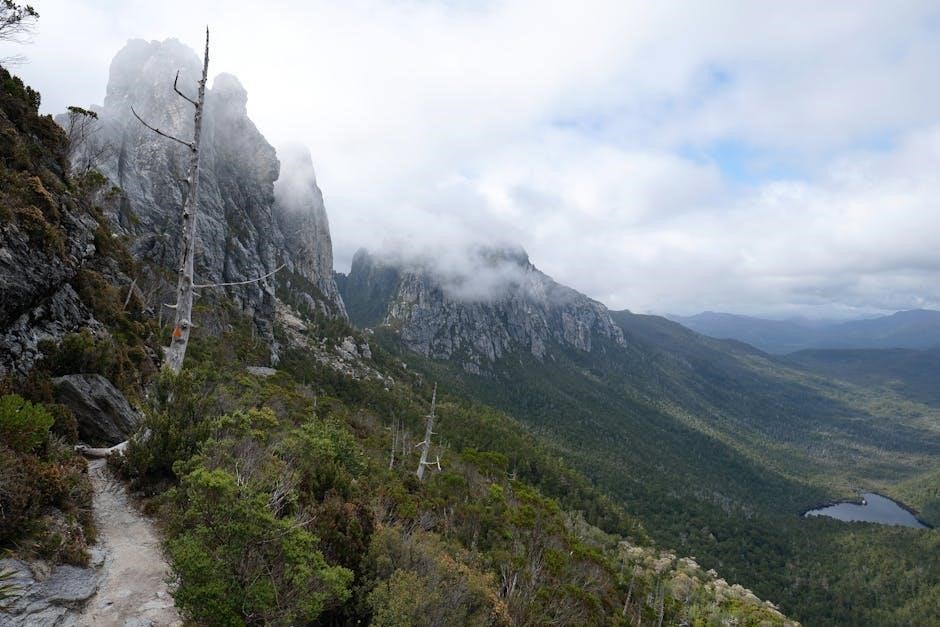
Wilderness Safety and Risk Management
Wilderness safety involves assessing terrain, weather, and potential hazards to minimize risks. Guides use emergency response plans, first aid, and wildlife encounter protocols to ensure group protection and preparedness.
Assessing Terrain and Weather Conditions
Assessing terrain and weather is critical for safe wilderness navigation; Guides evaluate landforms, elevation changes, and natural obstacles to plan routes. Weather forecasting involves observing cloud patterns, temperature shifts, and wind direction to predict conditions. They use tools like barometers and anemometers for accurate readings. Understanding terrain helps avoid hazards like unstable slopes or fast-moving rivers. Experience allows guides to anticipate challenges, ensuring groups are prepared for varying environments. This skill is vital for minimizing risks and ensuring a safe wilderness experience.
Emergency Response and First Aid
Wilderness guides must be adept at emergency response and first aid, as remote locations often lack immediate medical access. They are trained to assess injuries, stabilize patients, and administer care until professional help arrives. Common scenarios include treating fractures, burns, and wounds, as well as managing altitude sickness or heatstroke. Guides carry essential first aid kits and know how to use items like splints, tourniquets, and blister care. Their ability to remain calm and act decisively in crises is crucial for preventing minor issues from escalating into life-threatening situations.
Wildlife Encounters and Safety Protocols
Wilderness guides are trained to handle encounters with wildlife, ensuring both human and animal safety. They teach participants to maintain a safe distance, store food properly, and avoid attracting wildlife. Protocols include carrying bear spray, knowing animal behavior, and reacting calmly during encounters. Guides emphasize noise-making while hiking to avoid surprising animals. They also educate on recognizing signs of aggressive behavior and when to stand their ground or retreat. These measures minimize risks and foster coexistence with wildlife in their natural habitats.
Wilderness Navigation Tools and Techniques
Wilderness navigation relies on maps, compasses, and GPS for tracking routes and determining positions. Guides also use natural signs like the sun, stars, and landmarks to adapt to challenging environments, ensuring accurate and reliable travel through remote areas.
Using Maps and Compasses
Maps and compasses are essential tools for wilderness navigation. A topographic map provides detailed terrain features, while a compass helps determine direction. Guides use the compass’s rotating bezel to set bearings and align map directions with actual landscapes. Key skills include identifying contour lines, landmarks, and magnetic north. Proper orientation ensures accurate route-finding. Practicing with map and compass is crucial, as GPS may fail in remote areas. Understanding declination and scaling is vital for precise navigation, especially in dense forests or featureless terrains.
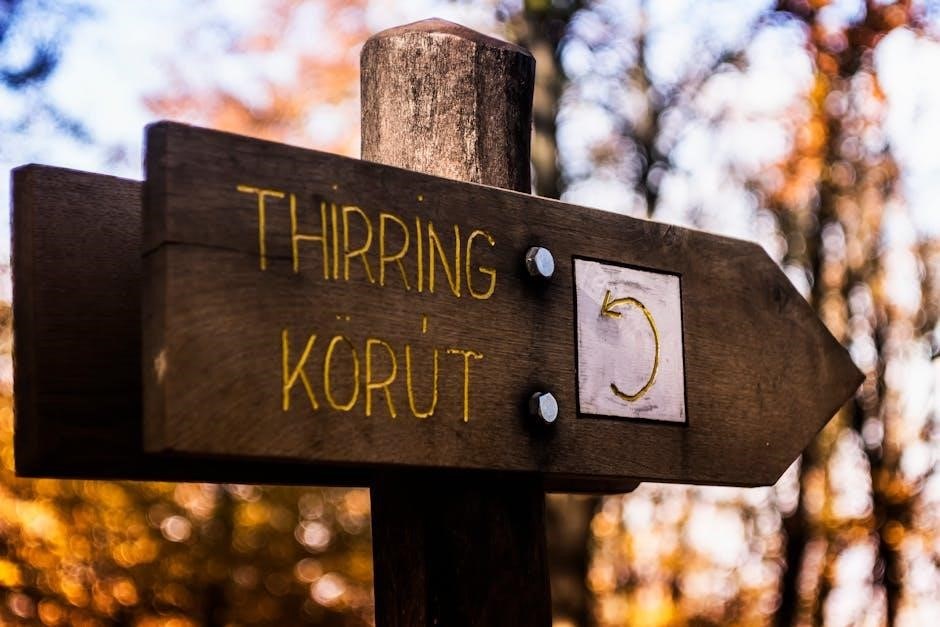
GPS Navigation in Remote Areas
GPS navigation is a powerful tool for wilderness guides, providing precise location data in remote areas. Handheld GPS devices use satellite signals to determine coordinates, which can be paired with digital maps for better route-planning. However, signal strength can be affected by heavy tree cover or deep valleys. Guides must know how to mark waypoints, track routes, and use battery-saving modes. While GPS offers convenience, it should never replace traditional navigation skills, as devices can fail due to dead batteries or signal loss in challenging terrains.
Natural Navigation Methods
Natural navigation relies on observing the environment to determine direction and location. The sun’s position, with the sun rising in the east and setting in the west, is a key indicator. The North Star (Polaris) provides a reliable northern direction at night. Landmarks like rivers, ridges, and valleys can also guide navigation. Wilderness guides use these methods when modern tools fail, ensuring they can lead groups safely. Understanding natural signs enhances self-reliance and is a vital backup for GPS and compasses, ensuring accurate travel in remote wilderness areas.
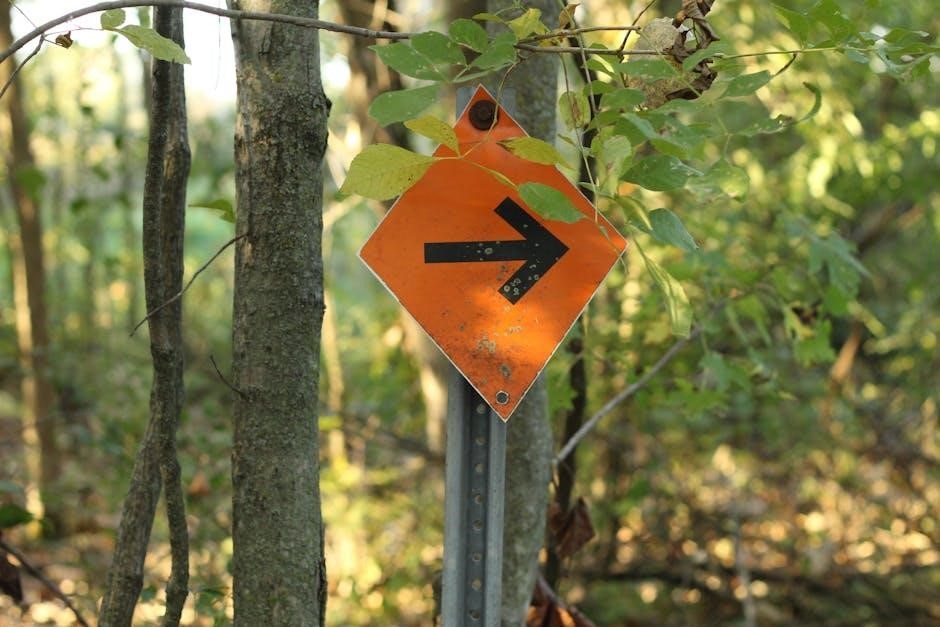
Wilderness Health and Hygiene
Wilderness guides emphasize preventing injuries, treating wounds, and maintaining sanitation to avoid illnesses. Mental health is also crucial, as isolation can affect well-being in remote environments.
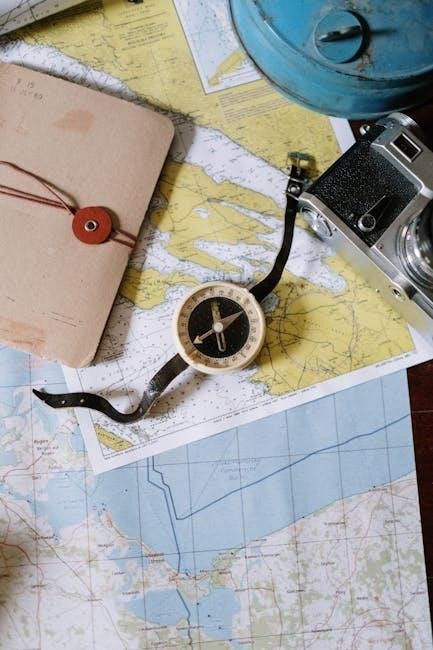
Preventing and Treating Injuries
In wilderness environments, preventing injuries is crucial due to limited access to medical care. Guides emphasize proper footwear, protective gear, and cautious navigation to avoid trips, cuts, and sprains. When injuries occur, basic first aid skills are essential, such as cleaning wounds, applying dressings, and using tourniquets if necessary. For fractures or severe injuries, immobilization with splints is critical. Guides also monitor for signs of infection and know when evacuation is necessary. Prompt treatment ensures safety and minimizes complications in remote areas.
Sanitation Practices in the Wild
Sanitation in the wilderness is vital to prevent disease and protect the environment. Guides emphasize proper handwashing with biodegradable soap and water before handling food. Waste disposal involves digging catholes at least 6-8 inches deep and 200 feet away from water sources. Properly burying human waste and disposal of trash in sealed bags are essential. These practices prevent contamination of water sources and maintain ecosystem health, ensuring a safe and sustainable wilderness experience for all participants.
Mental Health in Wilderness Environments
Mental health in the wilderness is crucial for both guides and participants. Prolonged isolation can amplify stress, while nature’s tranquility can enhance well-being. Guides are trained to recognize signs of mental fatigue, such as irritability or withdrawal, and employ strategies to uplift morale. Encouraging teamwork and open communication fosters a supportive environment. Mindfulness practices, like grounding techniques, help individuals stay present and manage anxiety. Balancing solitude for reflection with group activities ensures a healthy mental state, promoting resilience and emotional stability during the wilderness experience.
Wilderness Law and Ethics
Wilderness law and ethics involve understanding legal restrictions, upholding environmental principles like Leave No Trace, and respecting indigenous cultures to preserve natural areas for future generations responsibly.
Understanding Legal Restrictions
Wilderness guides must adhere to local, state, and federal regulations, including permits for activities like camping or hunting. Protected areas, such as national parks or wildlife reserves, often have specific rules to preserve ecosystems and cultural sites. Guides must ensure compliance with environmental laws, like restrictions on campfires or waste disposal. Understanding legal boundaries helps maintain ecological balance and ensures safe, responsible exploration of natural spaces while respecting indigenous rights and historical preservation efforts.

Environmental Ethics and Leave No Trace Principles
Wilderness guides must uphold environmental ethics to preserve ecosystems and promote sustainability. The “Leave No Trace” principles are essential, emphasizing minimal impact on nature. Key practices include disposing of waste properly, avoiding disturbance of wildlife, and refraining from removing plants or rocks. By adhering to these guidelines, guides help protect fragile environments and maintain the integrity of natural spaces for future generations. These ethical practices not only preserve biodiversity but also foster a deeper connection with the wilderness.
- Minimize campfire impacts and fully extinguish flames before leaving.
- Respect wildlife by maintaining distance and not feeding animals.
- Stay on designated trails to prevent habitat destruction.
Respecting Indigenous Lands and Cultures
Wilderness guides must respect indigenous lands and cultures by acknowledging traditional ownership and rights. Understanding the historical and spiritual significance of these areas is crucial. Guides should educate groups on cultural sensitivity, avoid disrupting sacred sites, and follow local regulations. Collaborating with indigenous communities can enhance experiences and support conservation efforts. Ethical guiding practices ensure that these lands are preserved with dignity, fostering mutual respect and promoting sustainable tourism.
- Learn about local indigenous history and cultural practices.
- Avoid sacred or restricted areas without permission.
- Support indigenous-led initiatives and eco-tourism projects.
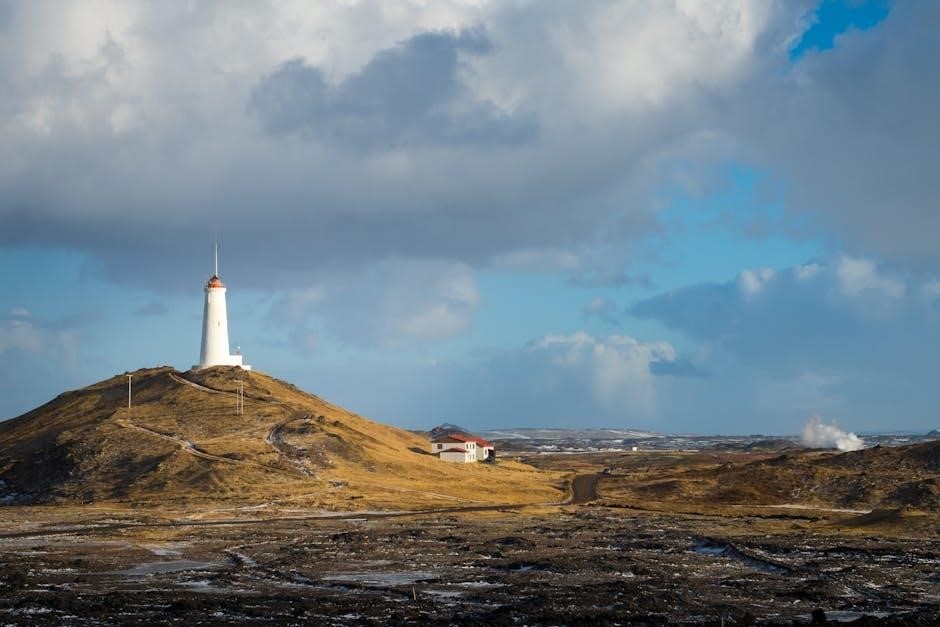
A wilderness guide plays a vital role in ensuring safe and enriching outdoor experiences. By mastering essential skills like navigation, shelter building, and emergency response, guides help individuals connect with nature responsibly. Respecting indigenous cultures and adhering to environmental ethics are cornerstone principles. This role demands physical stamina, mental resilience, and a deep passion for the wilderness. Aspiring guides must continually update their knowledge and skills to adapt to changing environments. Ultimately, the wilderness guide’s expertise fosters personal growth and a lasting appreciation for nature’s beauty and challenges.
